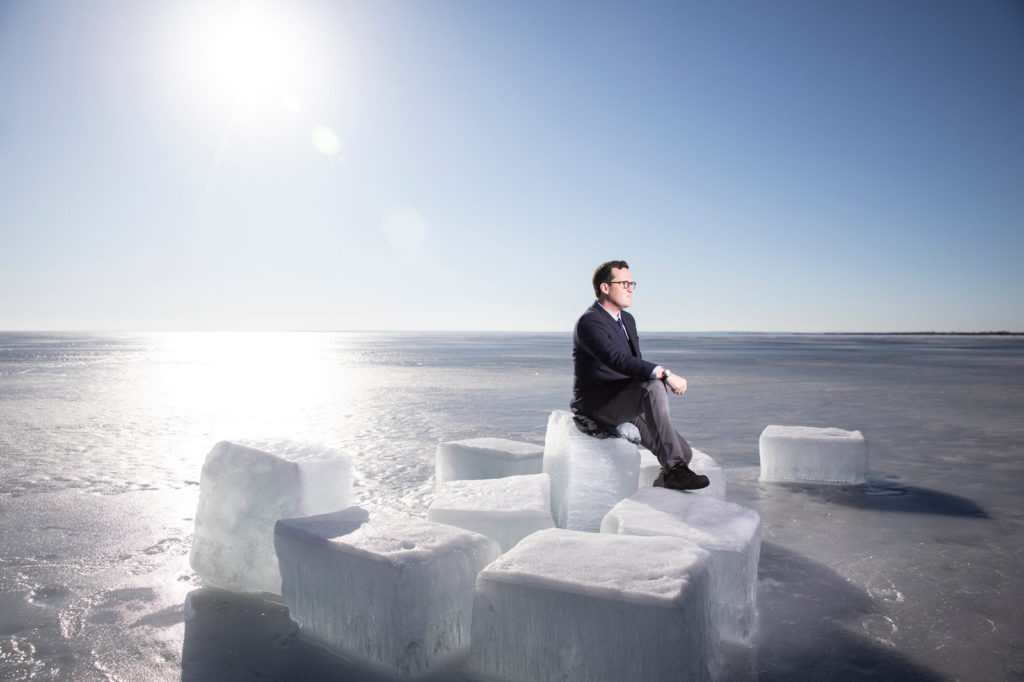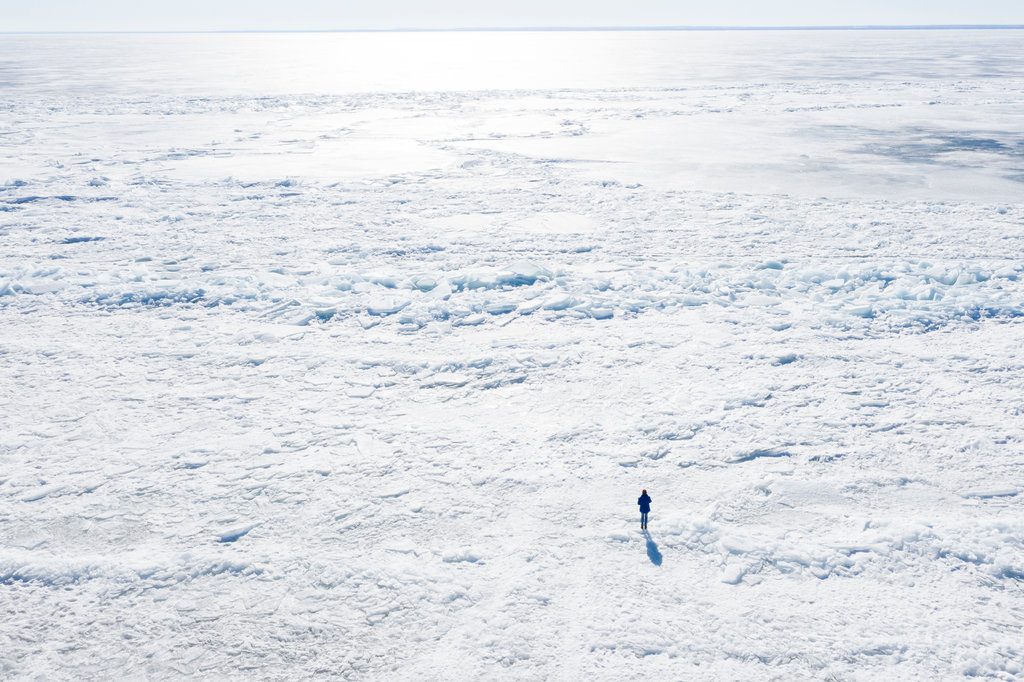Faced with a rapidly changing climate, where might millions of Americans relocate to escape newly inhospitable environments? Already, rising seas in New Jersey and wildfires in California are forcing locals to rethink whether to rebuild or move elsewhere. “We are already seeing northern range migration of flora and fauna in the Northern Hemisphere,” says Jesse M. Keenan, lecturer in architecture at Harvard’s Graduate School of Design. “What is to say that we humans won’t be next to move?”
Last September, The Guardian tapped Keenan for a series of reportage about so-called “climate migrants,” or people forced to relocate due to the effects of climate change, including rising seas and persistent wildfires. As a concept, climate migration (or “climigration,” a term coined by the attorney and advocate Robin Bronen) hits at an intersection of Keenan’s wide-ranging work on climate adaptation, urban development, and public policy—but it may soon be less of a concept and more of a reality for many Americans.
“The climigration discourse is often framed around forced displacement, but there is another category of elective mobility that is critically important to understanding future climate scenarios,” Keenan says. “This broader range of migration considerations could have a significant influence on the future of American cities, particularly in the rust belt, which is proximate to the fresh water resources of the Great lakes.”
“Come to Duluth, the Air-Conditioned City,” heralds a vintage postcard that Keenan keeps in his Harvard office. It’s one of the many Duluth-flavored artifacts he has gathered over the past few months, as he and a team of GSD students have researched the city’s cultural and physical infrastructure with an eye for understanding the Duluth’s capacity to adapt to future climigrants.
Keenan says Duluth might set a valuable example for sustainable urbanization by advancing climate mitigation and adaptation policies, and by branding itself as a climate reprieve. Its cooler climate and fresh-water access are draws, certainly, but the region also boasts reliable sources of energy production and access to high quality healthcare and education. Duluth also has an infrastructural capacity that would allow the city and its region to diversify economically in the future. Land prices and the cost of living are cheap—for now—and the region boasts a well-educated and skilled labor force. Beyond affordability and accessibility, Keenan argues, Duluth is home to a diverse and vibrant range of cultures that speak to a certain authenticity of place that is compelling to populations on the move.
Climigration involves broad, overlapping sets of considerations. Current discourse tends to focus on forced displacement from specific events, but Keenan and his colleagues are also considering changing consumer preferences and economic mobility—in other words, if people are forced to move, what options are within their preferences and financial reach? And how can a city like Duluth prepare itself for such a shift while maintaining community-driven values?
The New York Times followed Keenan and his team around Duluth during a portion of their research. Their “Duluth Climigration” project engages climate adaptation planning, demography, market analysis, design research, and infrastructure analysis to explore a range of scenarios for the physical adaptation of Duluth. Thereafter, climate imaginaries and physical planning are synthesized, and then complemented by a marketing effort that could target mobility market segments—across the income spectrum—with the intent of projecting Duluth as a “climigrant friendly city.”

New York Times reporter Kendra Pierre-Louis observes the key assets that Keenan and other researchers have identified in Duluth, as well as other climigrant-appropriate cities like Buffalo: relatively cool temperatures year-round, lower wildfire risk than the West or the Southeast, inland location (as in, isolated from rising seas), and ample fresh water, via the Great Lakes.
Keenan’s concern is that inflows of climigrants may undermine affordability and further challenge existing income inequality in the Rust Belt. To this end, his team strives to “[u]nderstand not just how one markets to economically-mobile populations, but how we accommodate existing marginalized and aging communities in the advancement of affordable housing, as well as access to transportation, healthcare and other services and amenities.”
As principal investigator for “Duluth Climigration,” Keenan convened and collaborated with a team of GSD students to execute research and develop an economic development and marketing framework for the City of Duluth. Keenan and the team presented this work at a March conference focused on Duluth and the future of climate change. Their next phase of study will begin to address not just the receiving zones for climigrants, but also the high-risk geographies where people may be otherwise trapped.
“This idea that we have this national researcher who has identified Duluth as a place that has kind of a secret sauce when it comes to being a place for refuge and sustainability and resiliency, that is something you want to be a part of,” said Duluth’s mayor, Emily Larson.
“Because climate migration transcends disciplinary boundaries, the role of the designer becomes the facilitator of interdisciplinary collaboration,” observed project manager Alexandra DiStefano (MLA ’20). “This project has motivated me to further cultivate this role within academic research and professional practice.”
The full “Duluth Climigration” project team is: Jesse M. Keenan, Principal Investigator; Alexandra DiStefano, Project Manager; Don O’Keefe, Andreea Vasile Hoxha, Sam Adkisson, Jennifer Kaplan, Maura Barry-Garland, Sydney Pedigo and Runjia Tian
Read more about Jesse Keenan’s climigration research via The New York Times, or view his March conference presentation via the University of Minnesota.
Photography by Tim Gruber for The New York Times
